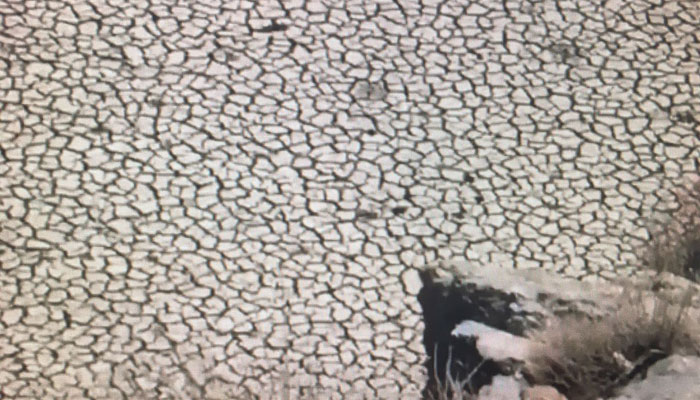Dangers of drought persist in Balochistan
Northern parts of Balochistan are more prone to drought
September 04, 2017

QUETTA: Balochistan, the largest province in the country in terms of land mass, is blessed with several natural resources including minerals.
With its beautiful landscape comprising mountains and plains, the province also has forests in some areas and a 1000-kilometre long coastline.
The province, however, has limited land where there are gardens and agricultural tracts. Most part of Balochistan comprises barren land, while fears for drought have even been looming where there is little agricultural land. In fact, it will not be wrong to say that these areas have already been engulfed in a drought situation. The major reason for this is low monsoon rains for the past couple of years. In the areas which received some rains, the threat of drought is almost over.
At present, if we analyse, the northern parts of Balochistan are more prone to drought. These include Qila Abdullah, Qila Saifullah, Pishin, Mastung and other areas. Apart from this, the provincial capital is also facing a drought situation. The dried Hanna Lake — a beautiful tourist spot 10km from Quetta — has completely dried up, which has affected the production of apples, peaches and grapes in the region.
Naseebullah Khan, ambassador of IUCN Balochistan, an environmental organisation, acknowledged the fact that the situation of droughts is getting worse in northern Balochistan. This is a cause of concern for droughts to occur in the western and central areas of Balochistan, he added.
The only reason the conditions in western areas are not as severe as those compared to the north is because of the monsoon rains, which bring some relief to the coastal areas as well. That being said, the danger of drought still looms. Only areas adjacent to Sindh and Punjab experience better conditions.
Due to the shortage of rainfall in southern, northern and central Balochistan, the reliance on ground water has been increasing, contributing to the rapid reduction in ground water in various areas.
Khan added that droughts are not only causing adverse effects on the environment, but even the economy and traditions of the areas are being affected.
Poverty has increased, while the availability of fodder for cattle has decreased, he informed.
Khan explained the change in the environment can be assessed by noting how Siberian seagulls have changed their migration route because of Quetta's Hanna Lake and Noshki's Zangi Nawar dam going dry.
According to Tahir Khan, deputy director of the meteorological department, most areas of Balochistan did not receive considerable rainfall this year. Particularly from March, there has not been as much rainfall as there was in the previous years. "This is why several of these areas are suffering from droughts," he said.
IUCN’s Khan said the government needs to take certain measures, adding that building dams in some areas is not the only solution as they need to be built according to an area’s needs.
“If a dam is built but there are layers of salt/mud then it will not be of much use,” he said.
Three dams hve been built in Pishin over several feet of salt and mud, which is detrimental to storage of water, said Khan.
The government also needs to keep check-and-balance on tube wells as some people install them without putting in much thought and avail water 24/7 from it, most of which is wasted away.
When Provincial Disaster Management Authority’s Director General Mohammed Tariq was approached on the subject, he said that generally there isn’t a big threat of droughts but in some districts, the danger persists.
The official said that overall these districts are around 20, including Quetta Division, Kalat, Makran, and Nasirabad Division. According to the PDMA officials, within the province the harvest of almonds, grapes and apricot has been affected.









